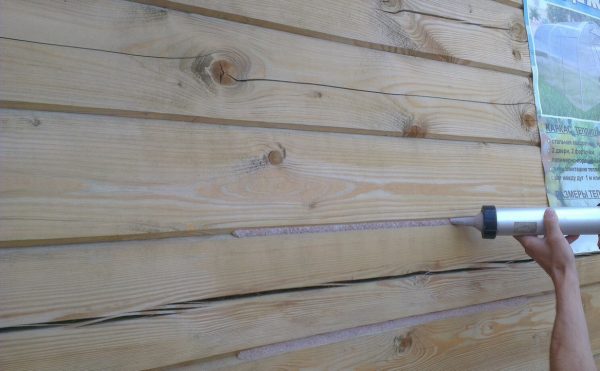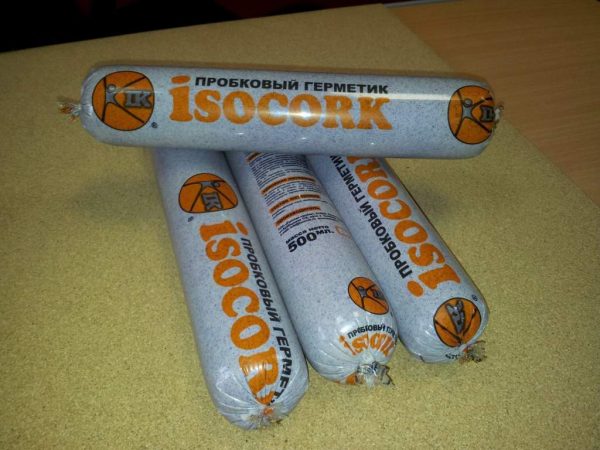During repairs in the house, it is often necessary to join together sheets of flooring, or even combine different types of materials for decoration. A special cork sealant is well suited for cork and other wooden coatings: this tool reliably fills seams, joints and eliminates all kinds of defects.
- The composition and properties of the sealant
- Benefits
- Application area
- Use in thermal protection systems
- Sealing of building structures
- Floor decoration
- Sealing joints
- Application in sound insulation systems
- Application technology
- Using joint sealant
- Sealant for facades and interior walls
- Parquet cork
- Frequent application errors
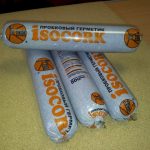
The composition and properties of the sealant
The basis of this sealant is cork chips (up to 90–95%). Also in the composition are water, polymer additives, binders and fillers, giving the tool the desired texture and density. The reliability of the finished sealant will depend on the quality of the cork: the best raw materials are obtained from the bark of cork oak, and materials based on it will cost significantly more than substitutes from other types of wood.
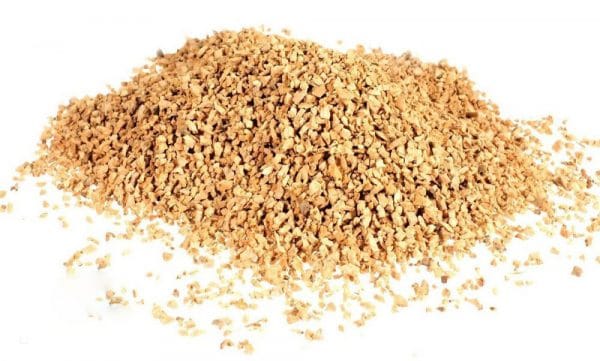
After solidification, the sealant has the following properties:
- firmness and elasticity;
- low specific gravity;
- low thermal conductivity;
- environmental Safety;
- resistance to physical, chemical effects.
The properties of a particular sealant will depend on the type of adhesive components. Most often, their role is played by polyacrylate adhesives - water-soluble compositions that do not emit harmful substances during solidification. Polyacrylates enhance the degree of adhesion of the sealant to different materials, while combining perfectly with the cork and leveling its disadvantages: hygroscopicity, instability to the effects of UV radiation, acidic environment.
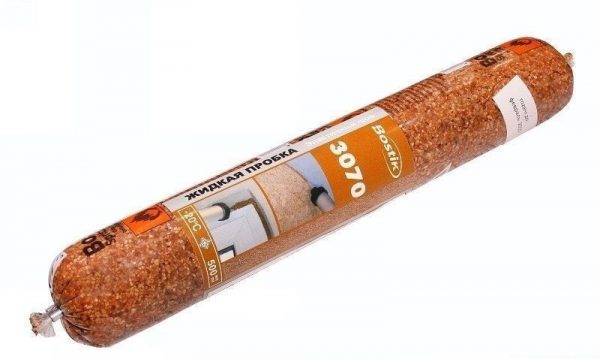
Benefits
Sealants based on cork chips (liquid cork) are very popular in construction and repair. They can boast a number of advantages, and the main one is safety for humans, the ability to apply indoors, including in children's institutions and hospitals. The basis of any sealant is biodegradable natural material, all additional components are also environmentally friendly. Means are diluted with water, they do not have organic solvents.
Other advantages of cork sealant:
- excellent thermal insulation properties;
- joint tightness;
- improvement of soundproofing protection of the room;
- strength, long service life (up to 10 years);
- resistance to humidity, temperature extremes;
- the ability to apply on deformable substrates due to elasticity;
- suitability for different types of materials, excellent adhesion to them;
- lack of shrinkage over time, maintaining the shape and original appearance.
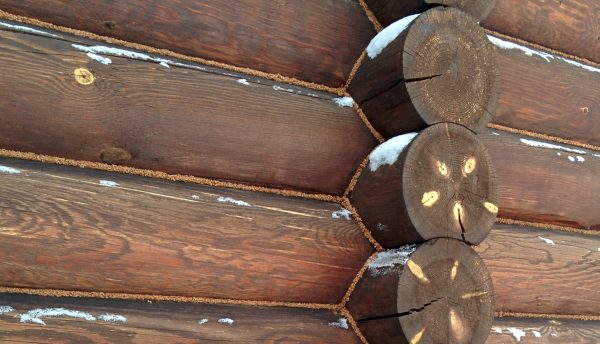
Application area
Any seams, joints, problem areas on floors and walls can be sealed with a liquid stopper. It is ideal for cork floors, laminate, parquet.In addition, such compositions can be used wherever it is necessary to carry out insulation, sound insulation and sealing of the room. Here are other areas of application:
- sealing joints during the repair or assembly of panel houses, interpanel joints in various structures;
- arrangement of assembly seams on windows, doors;
- the formation of sealing loops, expansion joints;
- sealing joints in houses made of SIP panels or wood;
- creation of gaskets for damping vibration in mobile structures;
- improvement of sound insulation of interior partitions and floors.
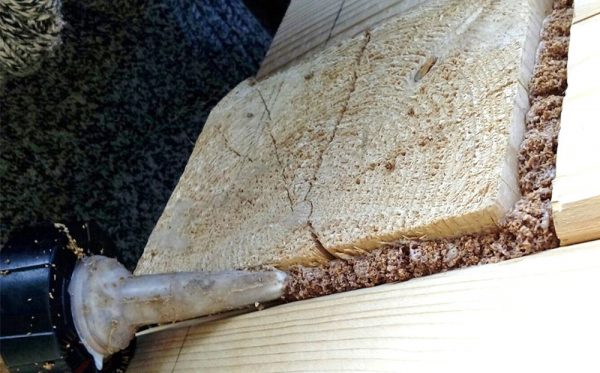
to contents ↑In addition to materials based on wood, sealant with cork can be applied to concrete, glass, ceramics, metal and PVC, it does not harm even delicate substrates.
Use in thermal protection systems
Sealing joints is a mandatory component, if necessary, to strengthen the thermal insulation of buildings and structures. Also, the implementation of thermal protection is required to exclude the appearance of cold bridges that can occur in hidden sections of structures. Cork sealant adheres securely to the base, forming a monolithic joint.
Due to its ductility and optimum fluidity, the sealant fills even minor defects, cracks, is easily inserted into the seam and smoothed with a spatula. If the product is used to seal joints of top coatings, it evens out any roughness, enhances aesthetic appeal, and lends itself well to coloring or tinting.
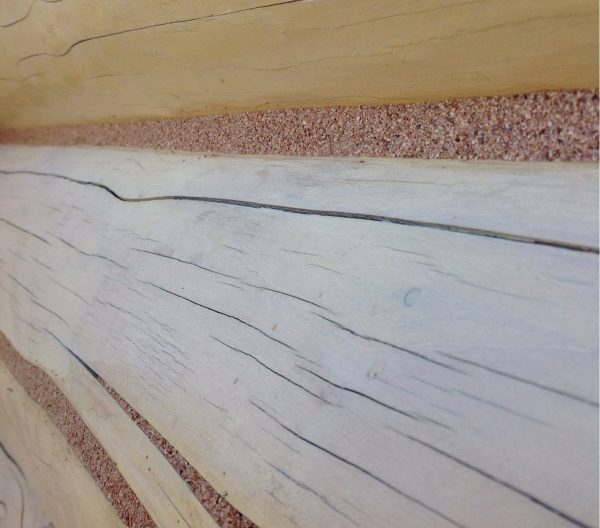
Sealing of building structures
Any structures made of reinforced concrete or SIP panels have a significant drawback: they are prone to linear fluctuations during changing seasons. Many sealants are not suitable for sealing joints in such structures, because they do not have the proper elasticity and quickly collapse. Even the popular sealing material - polyurethane foam - gradually cracks, turns yellow and completely loses its properties. Special mastics are well suited for sealing joints, but they are quite expensive, and they are also not environmentally friendly.
Cork sealant is able to replace mastics and other types of sealing compounds. They can fill all the seams, including the locks, eliminate the cold bridges, cover the edges of the panels and the areas of their adjunction to the frame. With the help of cork sealant, it is possible to seal joints in apartments even with your own hands, which is especially true for old panel houses.
to contents ↑
Floor decoration
Sealants based on cork are well suited for laying floor coverings, including linoleum. They reliably close the joints between the wall and the floor, without interfering with linear vibrations and protecting the room from blowing and insects. If the floor is insulated with mineral wool, a liquid plug will prevent the removal of small fibers to the outside.
Cork composition allows you to mount a combined floor, where the laminate or linoleum joins the tiles. The sealant helps to enhance the aesthetics of the seam, prevents the penetration of dirt and moisture, smoothes the deformation and vibrations of wooden coatings and shrinkage of linoleum. When installing the latter, the sealant is selected in color, which eliminates the need for sills, but limits itself to the method of cold welding of joints.
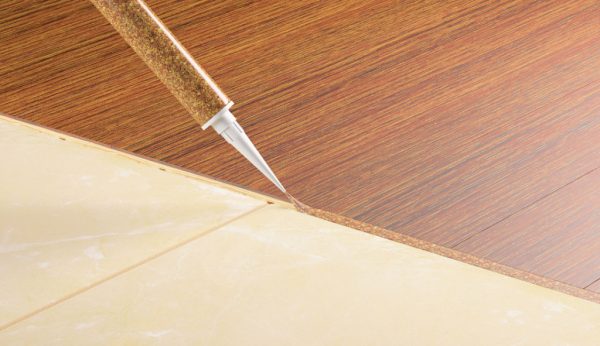
Sealing joints
The cork is able to compensate for mechanical vibrations, therefore, as part of the sealant, it is widely used in the arrangement of joints between partitions or other elements. Due to the elasticity of the cork, the influence of the severity of the entire building structure on the partitions, especially those made of drywall, is reduced. Liquid plug corrects gaps with variable thickness, seals mounting joints between gypsum and aerated concrete blocks.
to contents ↑It must be remembered that cork compositions are poorly suited for the formation of warm seams in wooden log cabins.The linear displacements in the new designs are too strong, and the adhesion of the cork to the wet tree is reduced, so the joints can be destroyed. You can apply funds of this type only at the joints of standing log cabins from profiled timber.
Application in sound insulation systems
Liquid plug can be used for gluing soundproof panels and sealing joints between them. The tool significantly reduces the noise level, although it does not completely eliminate it. Also, the sealant is suitable for flooring of rough floors and ceilings - it prevents creaks of floorboards and logs. Sealants from cork are suitable for soundproofing cars, fixing some components and blocks. They allow you to smooth out the vibration of machines, vibrating tables, generators.
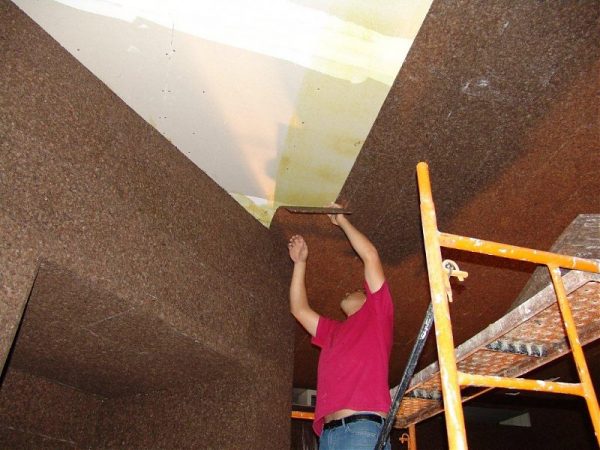
Application technology
When working with cork sealant, you must follow the recommended sequence of actions so that the result does not cause complaints. The general procedure for installing various coatings using liquid plugs is as follows:
- Clean all contact surfaces from dirt: dust, grease, dirt, stains. For this purpose apply a vacuum cleaner, soap solution, water, degreasers.
- Prepare the necessary tools: a closed-type gun, a spatula, a sponge to remove excess. Paste the edges of the seam with masking tape.
- Using a gun, apply sealant, distribute it with a nozzle. Smooth wide seams with a spatula, which periodically needs to be moistened with water. Remove excess funds immediately with a sponge.
- Allow completed seams to dry completely. Depending on the specific brand of the product, humidity and air temperature, the drying time can be 1-2 days.
All work with liquid plug should be carried out at a temperature of at least +5 degrees. Until the sealant has completely dried, the joints must be protected from the effects of precipitation.
to contents ↑Using joint sealant
The texture of the product is well suited for sealing various joints between homogeneous and dissimilar materials, walls and floors. For example, a Bostik 3070 brand product has sufficient elasticity to compensate for stress when changing temperatures, and reliably seals joints from moisture and dirt.
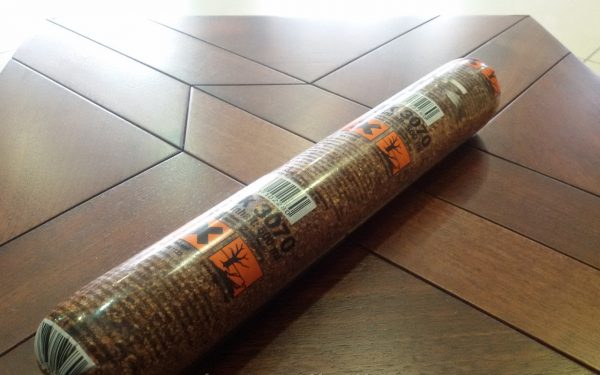
to contents ↑The filling technique is standard. It includes sweeping dust, debris or opening an old seam. After the gap is filled with sealant, they stop every 1–1.5 meters and level and remove the excess. Typically, fluid plugs are used for joints up to 3 cm wide, although joints and larger sizes are acceptable. After the cork has completely dried, the crawled areas can be carefully cut with a sharp knife.
Sealant for facades and interior walls
Cork sealants are suitable for the installation of facades. They reduce noise, vibration, reduce heat loss, give the wall a more natural and attractive look. On the inner walls, liquid cork is used for joining cork wallpaper and other rolled wood materials. The sealant is applied using a gun with a long thin tip, because the seams on the interior finish are usually of the smallest size.
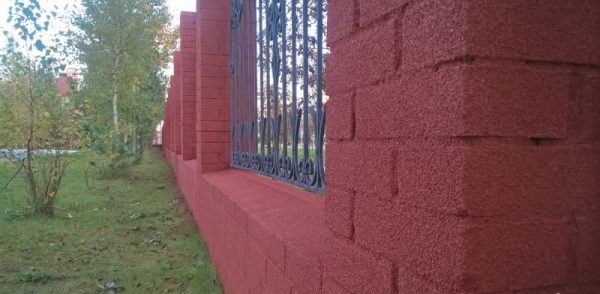
Parquet cork
When attaching parquet there is a need to close the joints between the wall and the flooring itself. Cork sealant can easily cope with this task: it is elastic, expands and narrows along with the base, it closes the gap of any size well.
Also, the tool can be used to eliminate defects of the old parquet, if cracks, chips have already appeared on it. Liquid stopper is convenient to eliminate the creak of the coating, if you use it during installation or replacement of individual sections.
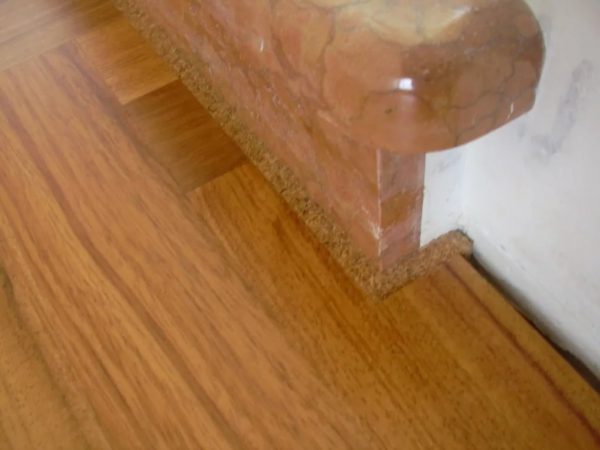
Frequent application errors
Novice masters often allow flaws when working with liquid plug. The most common mistake is to ignore thorough cleaning and degreasing of surfaces. As a result, the degree of adhesion of the sealant with the materials is reduced.Also, some do not immediately remove the surplus funds that have come out, leaving this work for the future. But after drying, the cork is quite difficult to clean, there is a risk of damage to the finished seam.
The mistake is to align the sealant on the basis of a higher level. In this case, an ugly gap will form, and the fit of the material will be loose. Liquid plug is not used for laying carpets and their joints with other materials; for this purpose, special glue should be selected.
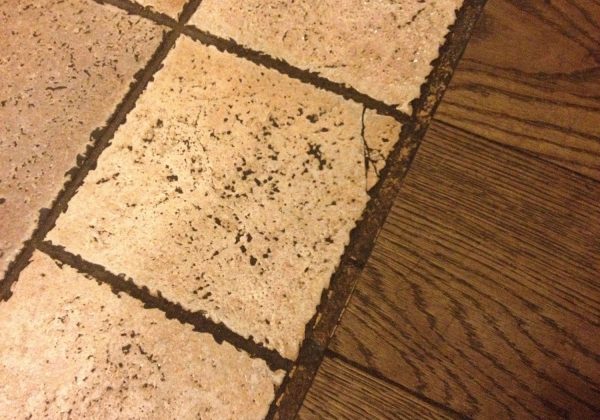
Despite the existing restrictions, cork sealing compounds are considered universal and multifunctional means. They allow you to solve various problems - from sealing joints to decorating walls. Popularity is due to affordability, high quality and environmental friendliness, therefore sealants are so widely used in the repair of apartments and houses.

